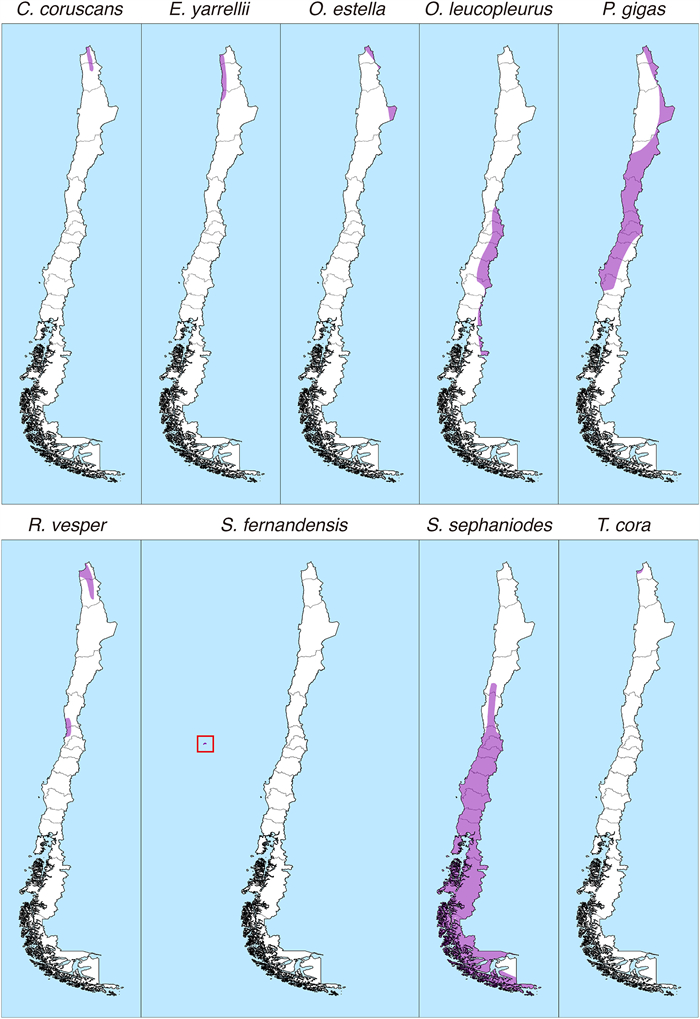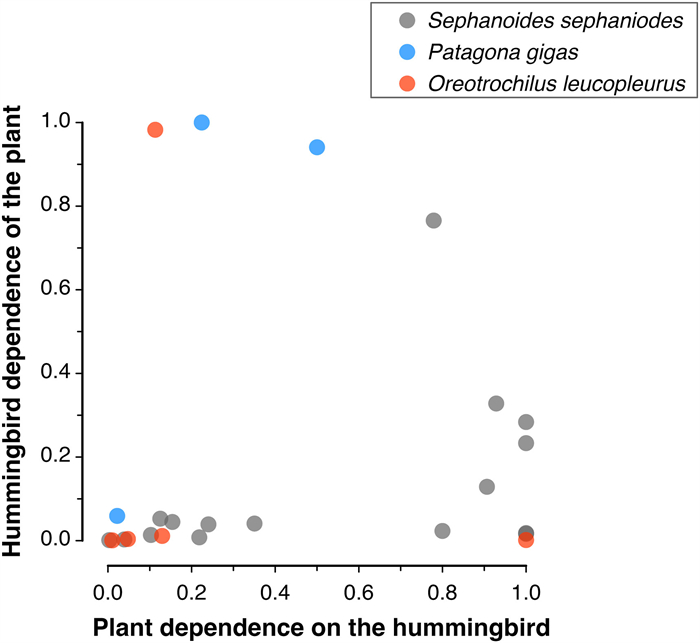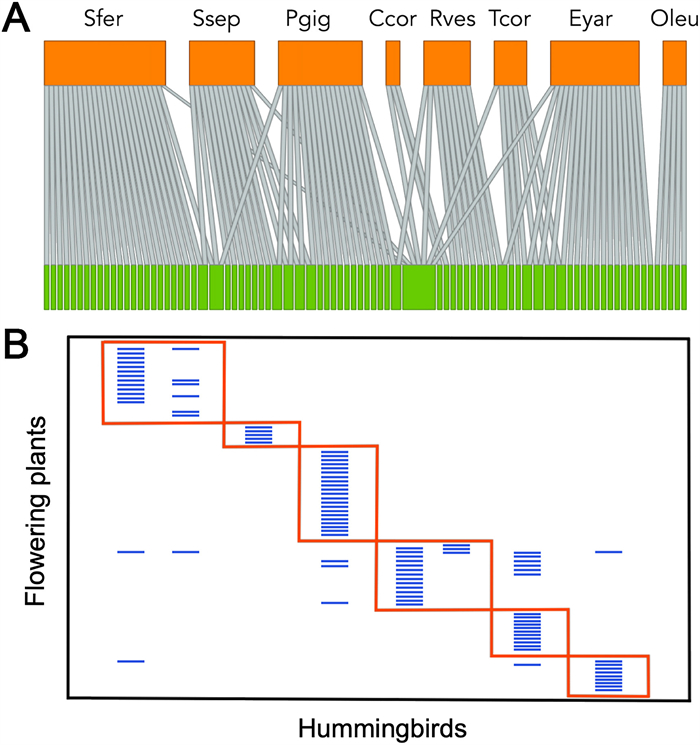
Distribution maps of the nine hummingbird species present in continental and insular Chile.
Figures of the Article
-
![]() Pictures of the nine hummingbird species present in Chile. As most species exhibit a strong sexual dimorphism, males (left side) and females (right side) are displayed. Patagona gigas is considered to be monomorphic.
Pictures of the nine hummingbird species present in Chile. As most species exhibit a strong sexual dimorphism, males (left side) and females (right side) are displayed. Patagona gigas is considered to be monomorphic.
-
![]() Distribution maps of the nine hummingbird species present in continental and insular Chile.
Distribution maps of the nine hummingbird species present in continental and insular Chile.
-
![]() Patterns of reciprocal dependence of Oreotrochilus leucopleurus, Patagona gigas, and Sephanoides sephaniodes, with the plant species they visit. Plant dependence (x-axis) represents the frequency with which a plant species receives visits from a hummingbird species relative to the total visits received. Values equal to one indicate the plant is visited only by the hummingbird species, indicating maximum specialization. Likewise, hummingbird dependence (y-axis) represents the frequency with which a hummingbird species includes a plant species as a food item relative to the total number of visits performed on plants. Values equal to 1 indicate the hummingbird species includes only one plant species in its diet, indicating maximum specialization for that plant (see Bascompte and Jordano, 2007 for details). Each point indicates simultaneously the dependence of plants by hummingbird species, and the dependence of hummingbirds by plant species.
Patterns of reciprocal dependence of Oreotrochilus leucopleurus, Patagona gigas, and Sephanoides sephaniodes, with the plant species they visit. Plant dependence (x-axis) represents the frequency with which a plant species receives visits from a hummingbird species relative to the total visits received. Values equal to one indicate the plant is visited only by the hummingbird species, indicating maximum specialization. Likewise, hummingbird dependence (y-axis) represents the frequency with which a hummingbird species includes a plant species as a food item relative to the total number of visits performed on plants. Values equal to 1 indicate the hummingbird species includes only one plant species in its diet, indicating maximum specialization for that plant (see Bascompte and Jordano, 2007 for details). Each point indicates simultaneously the dependence of plants by hummingbird species, and the dependence of hummingbirds by plant species.
-
![]() (A) Bipartite metanetwork diagram showing the interaction between hummingbirds (upper orange boxes) and plants (lower green boxes). The width of boxes is proportional to the species' total interactions. Links are depicted of similar width as qualitative presence-absence data were used in the analysis. (B) Modular matrix version of the set of interactions showing six non-random patterns. Modularity differed significantly from a null model at P < 0.001. (For interpretation of the references to color in this figure legend, the reader is referred to the Web version of this article.
(A) Bipartite metanetwork diagram showing the interaction between hummingbirds (upper orange boxes) and plants (lower green boxes). The width of boxes is proportional to the species' total interactions. Links are depicted of similar width as qualitative presence-absence data were used in the analysis. (B) Modular matrix version of the set of interactions showing six non-random patterns. Modularity differed significantly from a null model at P < 0.001. (For interpretation of the references to color in this figure legend, the reader is referred to the Web version of this article.
Related articles
-
2025, 16(1): 100268. DOI: 10.1016/j.avrs.2025.100268
-
2024, 15(1): 100196. DOI: 10.1016/j.avrs.2024.100196
-
2024, 15(1): 100161. DOI: 10.1016/j.avrs.2024.100161
-
2021, 12(1): 41. DOI: 10.1186/s40657-021-00277-2
-
2020, 11(1): 19. DOI: 10.1186/s40657-020-00205-w
-
2019, 10(1): 41. DOI: 10.1186/s40657-019-0180-7
-
2018, 9(1): 26. DOI: 10.1186/s40657-018-0118-5
-
2017, 8(1): 12. DOI: 10.1186/s40657-017-0070-9
-
2016, 7(1): 15. DOI: 10.1186/s40657-016-0050-5
-
2011, 2(1): 39-45. DOI: 10.5122/cbirds.2011.0004


 Download:
Download:








 Email Alerts
Email Alerts RSS Feeds
RSS Feeds